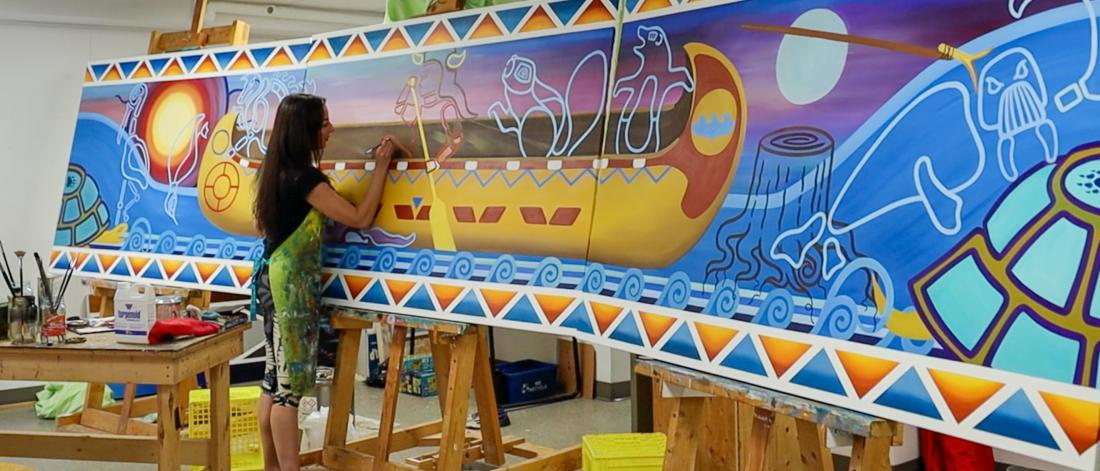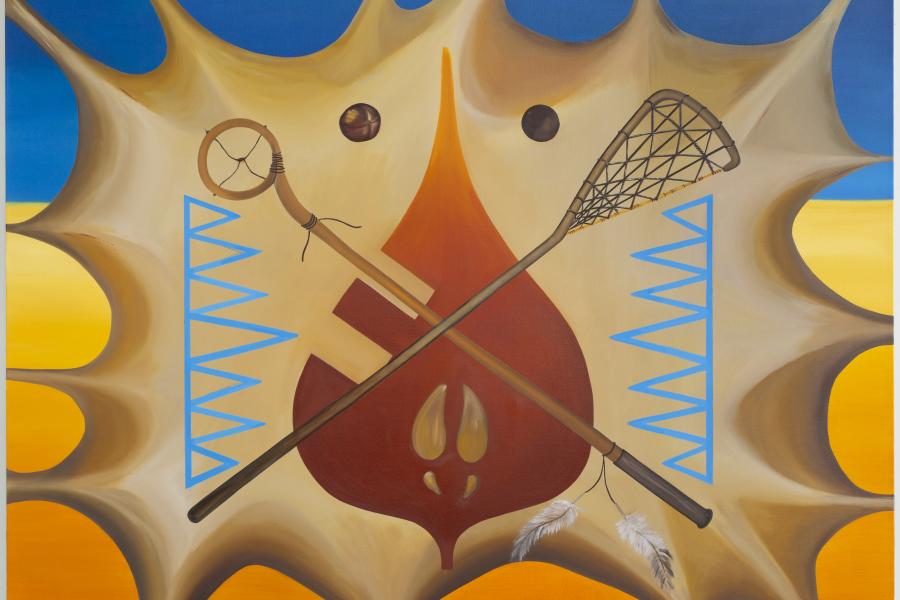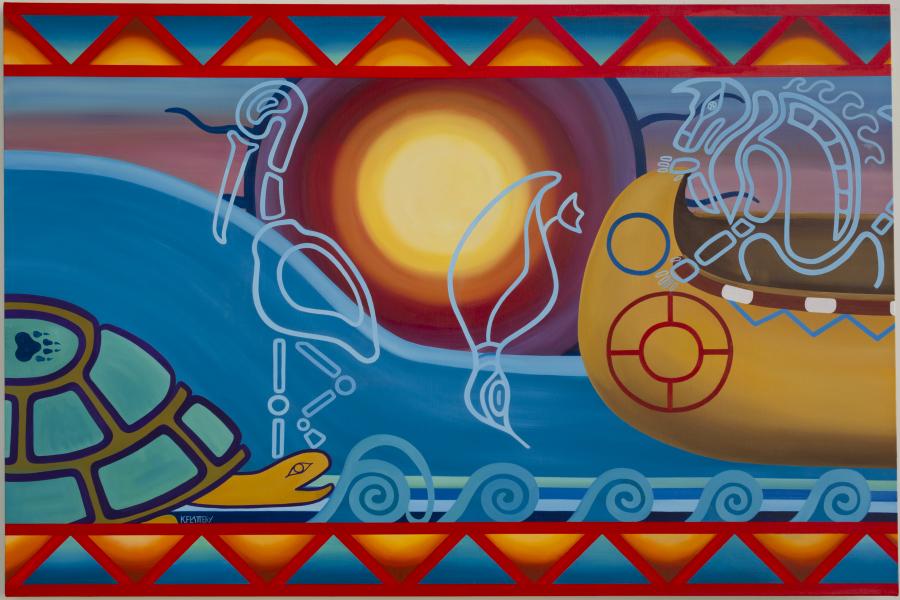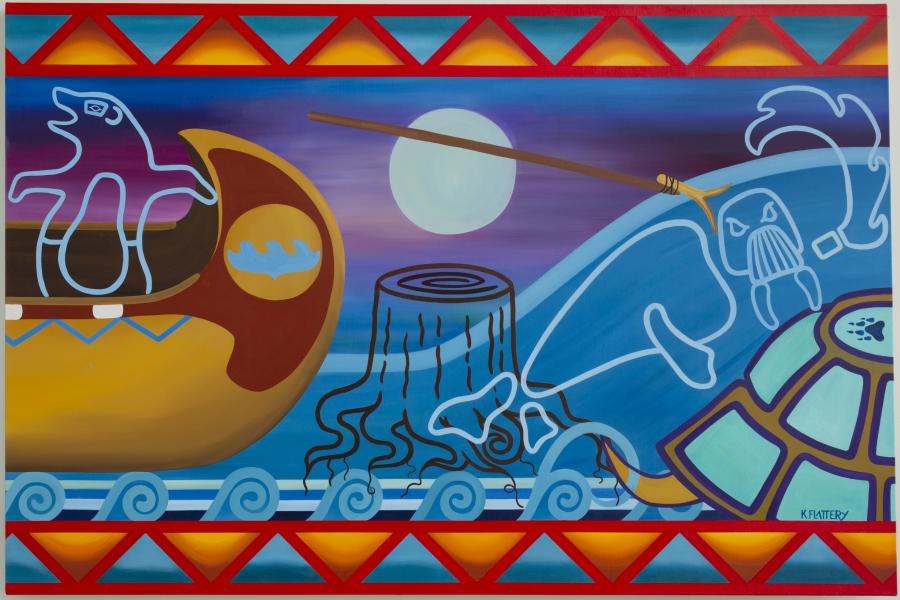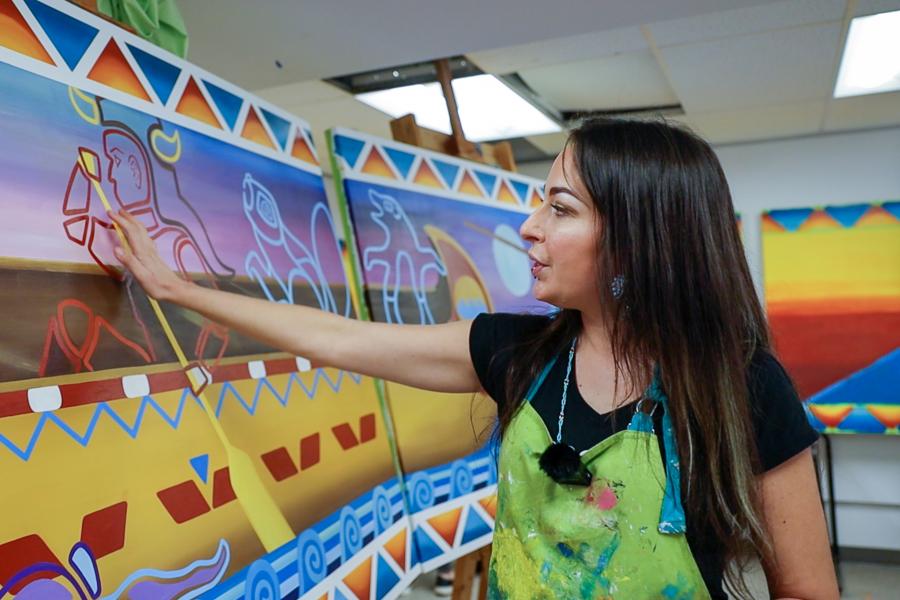Reaching the island, Wesukechak, a shapeshifter, made himself into a stump. The sea lions saw the stump and were puzzled, and began jumping and flopping about, trying to discover the meaning of the mysterious stump. Wesukechak was still, and then, seeing his chance, pulled out his deer horn spear, and killed them. They flopped, boiled, and hissed, and the waters rolled so high that everything—the island, and even the forest—began to flood. The animals who lived all around were afraid, and seeing Wesukechak’s raft, quickly jumped onto it.
The entire world was flooded with water. The animals remained on the raft for many days and nights. Soon their food ran out, and the grey wolf, one of the animals on the raft, would not stop grumbling, making his unhappiness known and causing the other animals to feel unsettled. Eventually, they decided they would have to act, so they devised a plan to swim down to see if they could find some earth at the bottom of the water.
Wuchusk, the muskrat, went first. The animals tied a rope around him and he swam straight down, but returned with nothing. Next the beaver tried, and he too came back empty handed. Finally, Nehkik, the otter, asked for a turn.
“I’m a very fast swimmer and stronger than the beaver,” he told the others, who started to laugh.
“You’re the smallest of all of us. You’ll never make it,” they said, mocking him. But, since they very much needed to find some earth, they tied him to the rope and he jumped in.
The animals holding the end of the rope waited, and eventually they felt the slack go loose. Frightened, they pulled the rope up, and Nehkik surfaced, no longer alive, but with a small piece of earth clutched in his paw.
Wesukechak took the earth from the otter’s tiny wet claws and rolled it in his hands. Then he blew on it four times and the mud grew into a large ball. The faster and louder he blew, the bigger the earth grew. Placing the earth on the turtle’s back, Wesukechak blew some more, until it became so wide and expansive that they could no longer see over it.
The animals went ashore. Wesukechak sent Kehkawwahkeen, the wolverine, out to run the circumference of the earth, so they could learn how big it had become. Twenty days later, Kehkawwahkeen returned and told them that the earth was still too small. So, Wesukechak kept blowing, and the wolverine ran out again. Forty days later he returned, but the earth was still too small. So Wesukechak blew and blew and blew, and Kehkawwahkeen ran again, but this time the earth was so large that he did not return. That is how the wolverine became a great wanderer.
Wesukechak ordered the snakes to make rivers and he told the grey wolf pushed big piles of mud with his nose to create the mountains. He made the trees and grass appear. Finally, he found Nehkik’s body, and breathed life back into the tiny otter . And that was how the world was made again.
iLearn more about Manitowapow.
iiWithin each cultural group’s version of the story, the animal who finally recovers the piece of earth changes. In Ininew, this animal is the otter, but in Oyate it is the beaver and in Anishinaabe it is the muskrat. In some versions, this animal does not survive its swim down to the bottom, but Flattery prefers ones in which the otter (or muskrat, or beaver) is revived by Wesukechak.

